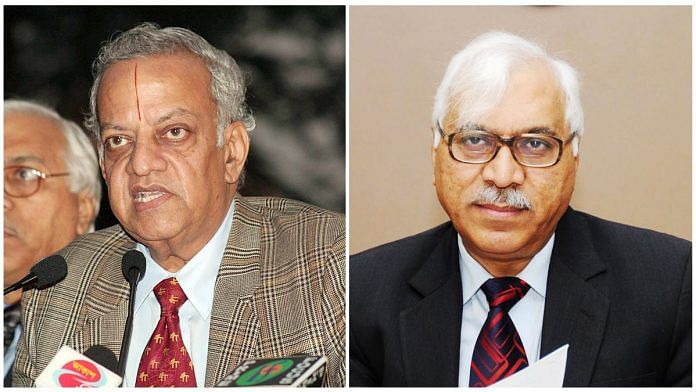New Delhi: Even as the top court expressed concern over the “truncated” run of chief poll commissioners, two former heads of the all-important Constitutional body felt it is unlikely that the full tenure of six years for all three members will be met in the post T.N. Seshan era.
One of them, S.Y. Quraishi, went on to propose a collegium system for the poll panel to select its candidates as is currently done to appoint judges for the high courts and the apex court.
In its observations, the Supreme Court has said that the government pays mere “lip-service” to the independence of the Election Commissioners. This is evident from the way the tenures of Chief Election Commissioners (CECs) have “slid” down from over eight years in the 1950s to a little over two years at best after 2004, it said, while hearing petitions that seek functional independence for Election Commissioners.
“Their (CECs) tenure is highly truncated and known from the very beginning… In this way, this so-called independence that you pay lip-service to, I am sorry to say, is completely destroyed by getting this kind of a term,” Justice K.M. Joseph told the government.
The Election Commission (Conditions of Service of Election Commissioners and Transaction of Business) Act of 1991 prescribes that the term of a CEC and Election Commissioner is six years or till the age of 65 years, whichever is earlier.
While Sukumar Sen, the first CEC, was in the office for 8 years and 273 days, his successor Kalyan Sundaram holds the record for the longest tenure of 8 years and 284 days.
Known for changing the face of Indian elections, T. N. Seshan was the last CEC to get a tenure of six years. After Seshan, his successor M. S. Gill was in office for 4 years and 69 days. It has been downhill since then, with tenures mostly ranging from two to three years and even less than a year.
While the average tenure of CECs were 3 years and 7 months when the Congress was in power, it stands at 1 year and 8 months during the BJP years.
There have been cases of short tenures during the Congress rule as well. For example, Nagendra Singh, the fourth CEC, served a little over four months from 1 October 1972 to 6 February 1973.
In 1990, V. S. Ramadevi became the first and till now the only woman officer to head the poll panel. But the Andhra Pradesh born Ramadevi also had the shortest stint of just 19 days from 26 November 1990 to 11 December 1990.
Also Read: ‘Is it done in such haste? With such tearing urgency?’ — SC questions govt on new EC’s appointment
What former CECs say
In the course of hearing, Justice Justice K.M. Joseph had remarked that he personally researched the tenures of all CECs, right from Sukumar Sen, to elaborate how tenures have come down.
But S. Y. Quraishi and N. Gopalaswami, the two former chief election commissioners, asserted that the current scenarios cannot be compared to the early years of the commission.
Quraishi welcomed the apex court’s remarks on the ‘fair and transparent’ mechanism for the poll panel but added that the court’s argument on the aspect of tenure reflects a lack of understanding.
“I have been saying it earlier also — That a collegium system should be in place to appoint the CEC. It will be good, if it gets implemented. But there is a lack of understanding in the bench’s argument regarding the tenure. When the Election Commision was made, it was a one-member panel and later becAme multi-member. Before becoming the CEC, they (election commissioners) are first appointed as ECs so everyone in the commission gets about 5-6 years in total,” he said.
Currently, the Supreme Court is hearing a clutch of petitions seeking among other things a collegium-like system for the appointment of ECs and CEC.
Established on 25 January 1950, the Election Commission was a single-member body till 15 October 1989. Two additional commissioners — V.S.Seigell and S.S.Dhanoa — were appointed the next day to assist CEC R. V. S. Peri Sastri as the country saw a general election, as well as elections in eight states that year.
Quraishi suggested that the appointments to the poll panel should be based on a Collegium system, constituting the Prime Minister, the Chief Justice of India (CJI) and an opposition leader, and that the CEC should be selected based on seniority level.
“Including a leader of the opposition is important, as it will put a stop on political appointments. The CEC’s tenure should not be extendable. There should be a bar for taking up other important positions after retiring from that post,” he proposed.
Similarly, ex-CEC N. Gopalaswami said the examples the Supreme Court took is of the era when there was only one member in the poll panel.
“If three members are appointed around the same time as members of the EC, then only one will be able to get a full tenure. Their predecessor will get limited tenure as their (Election Commissioner’s) tenure also has to be within the six-year limit. So it is not possible,” he said.
“The appointments should be such that members get an opportunity to work for four-five years, but that does not ensure they will get a full tenure as a CEC,” he said.
Even if each of them is not serving as the CEC for the full term, their experience as a member of the Commission will help them (when they head the poll panel), Gopalaswami asserted.
While Gopalaswami had held office for a little less than 3 years from June 2006 to April 2009, Quraishi had a shorter term as he headed the Commission from July 2010 to June 2012.
(Edited by Tony Rai)
Also Read: Bhutan’s performance-based pay for civil servants revives debate over similar policy in India



